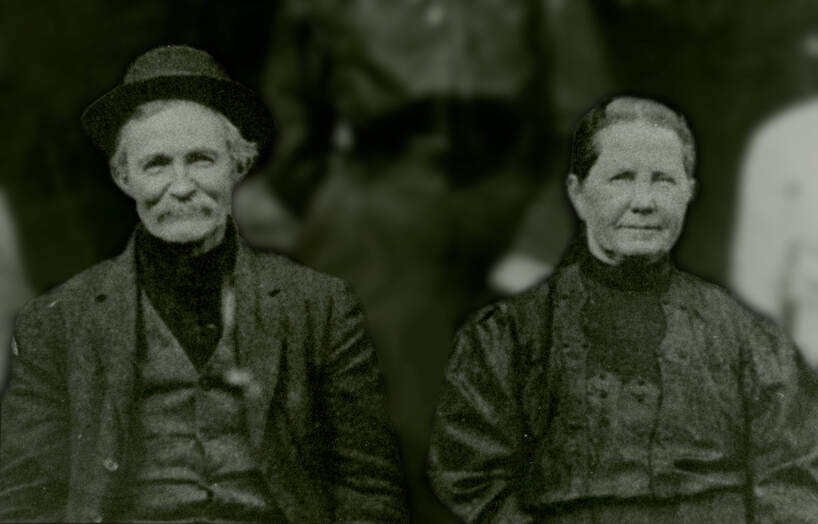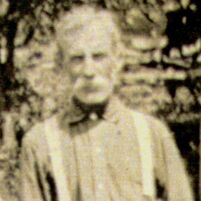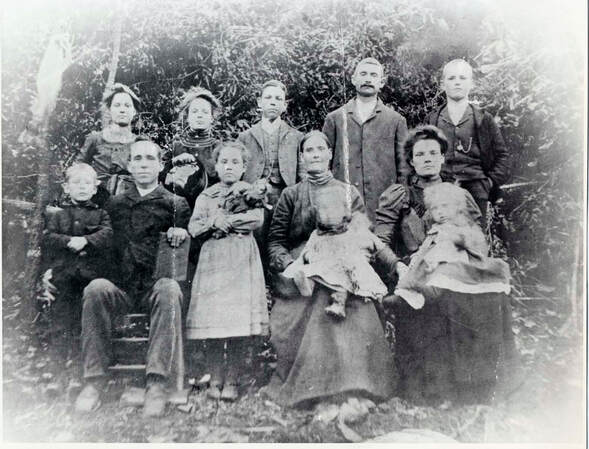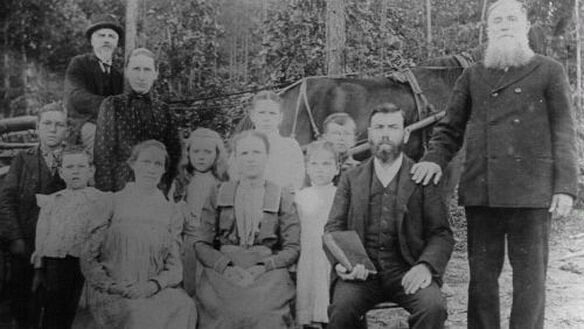RESTORING GOD'S CHURCH
David G. Roebuck
|
“As many Christians as are here present that are desirous to be free from all men-made [sic] creeds and traditions, and are willing to take the New Testament, or law of Christ, as your only rule of faith and practice; giving each other equal rights and privilege to read and interpret for yourselves as your conscience may dictate, and are willing to set [sic] together as the Church of God to transact business [as] the same,come forward.” - R.G. Spurling
|
WITH THESE WORDS Richard Green Spurling (1857–1935) concluded his sermon and invited those gathered on Thursday, August 19, 1886, to sit “together as the Church of God.” The small congregation met that Thursday in the Spurling family’s gristmill on the bank of Barney Creek in Monroe County, Tennessee. Eight of his hearers responded and together they established a congregation they named “Christian Union.” Since that day, Church of God ministries have expanded to include more than seven million members and perhaps twice as many adherents. While those who responded to Spurling’s call in 1886 might not have imagined the tremendous growth of Church of God ministries, they believed their actions were significant; in fact, they were confident they were inaugurating a new chapter in the restoration of God’s church.
Now more than a century later, some 39,000 Church of God congregations serve around the world in 185 nations and territories, while regional and international ministries provide resources and support through our divisions of World Evangelization, Care, Discipleship, Education, and Support Services. The founding of the Church of God and the development of these ministries is a story worth remembering and passing on to future generations.
Now more than a century later, some 39,000 Church of God congregations serve around the world in 185 nations and territories, while regional and international ministries provide resources and support through our divisions of World Evangelization, Care, Discipleship, Education, and Support Services. The founding of the Church of God and the development of these ministries is a story worth remembering and passing on to future generations.
|
Obeying the Great Commandment; Fulfilling Christ's Prayer
The Christian Union was born with a commitment to obey the Great Commandments to love God and neighbor and with a desire to fulfill Christ’s prayer that His disciples might be one (John 17:20). As a licensed Baptist minister, R.G. Spurling struggled with the exclusivity of his particular Baptist tradition. The Landmark Baptist Movement taught that only certain Baptists were in God’s church, and his Pleasant Hill Baptist Church in Cherokee, North Carolina, insisted that he cease fellowship with other Christians. Knowing God’s church was greater than the Landmark Movement, Spurling surrendered his preaching license and began to study and pray for restoration of a New Testament church. Supported by his father, Richard Spurling, R.G. observed that many churches valued creeds and traditions above the New Testament. He recognized that restoring God’s church would require a return to New Testament patterns and an emphasis on biblical love. Using railroad terminology, he described the New Testament church as traveling on the two rails of “love of God” and “love of neighbor” and concluded that through the centuries, many churches had replaced the “golden rails” of love with narrow rails of human creeds and traditions. His 1886 sermon and invitation called for a return to the New Testament and the golden rails of love as the only means of bringing about Christian unity and restoration. |
CHARTER MEMBERS
Eight responded to R.G. Spurling’s invitation to sit “together as the Church of God”:
|
The Christian Union
The eight who responded to R.G. Spurling’s invitation to sit “together as the Church of God” immediately organized a local congregation that they named Christian Union. Because R.G. had given up his ministerial credentials, it was necessary for his father, Richard, to moderate the organizational meeting. Once they had set the church in order, they agreed to receive members and to recognize ministers. With these agreements in place, the newly established church received R.G. Spurling as a member, and his father ordained him as pastor the next month.
R.G. Spurling soon established other Christian Union congregations in Monroe and Polk Counties in Tennessee. When Richard Spurling sold the Barney Creek mill, R.G. and his family moved near the Hiwassee River and continued to pastor a Christian Union congregation there. Later he purchased a farm at Turtletown, Tennessee, where he built and operated a gristmill.
Relocating to Turtletown situated Spurling only four miles from the Camp Creek community in Cherokee County, North Carolina. It was in Camp Creek that God brought an extraordinary revival of holiness to the mountains.
The eight who responded to R.G. Spurling’s invitation to sit “together as the Church of God” immediately organized a local congregation that they named Christian Union. Because R.G. had given up his ministerial credentials, it was necessary for his father, Richard, to moderate the organizational meeting. Once they had set the church in order, they agreed to receive members and to recognize ministers. With these agreements in place, the newly established church received R.G. Spurling as a member, and his father ordained him as pastor the next month.
R.G. Spurling soon established other Christian Union congregations in Monroe and Polk Counties in Tennessee. When Richard Spurling sold the Barney Creek mill, R.G. and his family moved near the Hiwassee River and continued to pastor a Christian Union congregation there. Later he purchased a farm at Turtletown, Tennessee, where he built and operated a gristmill.
Relocating to Turtletown situated Spurling only four miles from the Camp Creek community in Cherokee County, North Carolina. It was in Camp Creek that God brought an extraordinary revival of holiness to the mountains.
RICHARD SPURLING
R.G. Spurling’s father, Richard Spurling (1810–1891), was born in North Carolina where he lived until his family moved to Tennessee in 1822. The Clear Creek Baptist Church in Morgan County, Tennessee, ordained him in 1853. He was active in several Baptist congregations, including establishing the Holly Springs Baptist Church in Monroe County in 1859. His son Richard Green (R.G.) was born while he was serving as a missionary near Williamsburg, Kentucky. In 1882, Richard purchased property on Barney Creek and operated both a grist mill and sawmill until he sold the property in 1889.
Although Richard assisted his son, R.G., by setting the Christian Union in order, his familial and ministerial connections with the Holly Springs Church made it unlikely that he intended to stay with the infant congregation. The Holly Springs Church initially excluded him for joining the Christian Union, but dropped his case two months later. Richard remained active at Holly Springs until his death of unknown causes at the age of 81. He died in Anderson County, Tennessee, but there is no record of where he is buried. (See Beaty, R.G. Spurling and the Early History of the Church of God and Phillips, The Quest to Restore God’s House.)
Although Richard assisted his son, R.G., by setting the Christian Union in order, his familial and ministerial connections with the Holly Springs Church made it unlikely that he intended to stay with the infant congregation. The Holly Springs Church initially excluded him for joining the Christian Union, but dropped his case two months later. Richard remained active at Holly Springs until his death of unknown causes at the age of 81. He died in Anderson County, Tennessee, but there is no record of where he is buried. (See Beaty, R.G. Spurling and the Early History of the Church of God and Phillips, The Quest to Restore God’s House.)
|
|
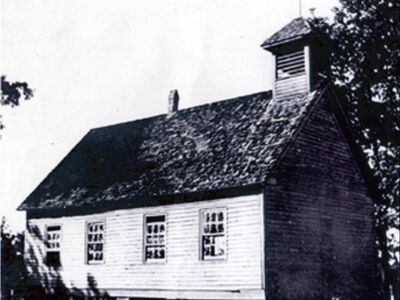 The Shearer Schoolhouse in the Camp Creek, North Carolina,
The Shearer Schoolhouse in the Camp Creek, North Carolina, community was the site of a holiness revival in 1896.
A Revival of Holiness
In 1896, four evangelists preached a ten-day revival at the Shearer Schoolhouse in Camp Creek, North Carolina. The evangelists were William Martin, Billy Hamby, Joe Tipton, and Milton McNabb. Although we do not know the extent of R.G. Spurling’s involvement in the revival, Billy Hamby was his brother-in-law. Milton McNabb was the cousin of a local farmer, William Franklin Bryant Jr. (1863–1949).
The evangelists proclaimed the necessity of holiness and challenged their hearers to seek the experience of sanctification. “Given to much prayer and fasting,” they preached earnestly, and throngs of people responded. Church of God Historian Charles W. Conn wrote, “Almost from the start of the meeting, the altars were filled with repentant sinners and seekers for the experience of sanctification. Many skeptics of holiness were convinced, and many more rough-living sinners were converted” (Conn, Like A Mighty Army, 24).
At the time of the revival, Bryant attended the Liberty Baptist Church, where his father was a deacon. He was married to Brunetty (Nettie) Anderson, and they had nine children. Although Bryant had been saved at age fourteen, he found himself continuing to struggle with sin. Earning his living as a farmer and sometimes bootlegger, Bryant hungered for God to do a cleansing work in his life. During the revival, he was amazed when those claiming sanctification went to people they had wronged and made their relationships right. He sought God for the same kind of experience in his own life. After much struggling, dying to his “selfish nature,” and forsaking everything, Bryant was sanctified one morning while riding his horse.
Following the revival, Bryant led services and Sunday school for those in the Camp Creek community who had accepted the holiness teaching of sanctification. According to our earliest account, “The people earnestly sought God, and the interest increased until unexpectedly, like a cloud from a clear sky, the Holy Ghost began to fall on the honest, humble, sincere seekers after God. . . . [O]ne after another fell under the power of God, and soon quite a number were speaking in other tongues as the Spirit gave them utterance” (Tomlinson, The Last Great Conflict, 189).
The Lord had done an extraordinary work in their lives, but they did not yet have a Pentecostal understanding of their experience. According to Conn, it would be some time later before they “would understand the doctrine, person, and nature of the Holy Spirit” (Conn, Like A Mighty Army, 31).
Many of their Camp Creek neighbors did not respond favorably to claims of sanctification, and religious and civic leaders persecuted the holiness believers. The Liberty and Pleasant Hill Baptist Churches excluded forty of their members for the “modern theory” of sanctification. When the community barred the holiness believers from the Shearer Schoolhouse, Dickson Kilpatrick gave them property to build a place to worship. Attempts to destroy the building with fire and dynamite failed, so in 1900 a gang of leading members of the community identifying themselves as the “One Hundred and Six” dismantled the church sand burned the logs. Realizing a godly response was vital, Bryant later remembered, “We lay on our faces and cried to God to deep us sweet and let us do nothing to grieve the Holy Ghost… [and] we asked for the signs to follow us more and more.” When those responsible for burning the church house were charged in court, Bryant responded by asking the authorities to forgive them.
The harassment was often violent. Persecutors polluted their wells, shot at them, beat them, and burned several homes. On one occasion, about 25 armed and masked “night riders” surrounded the home of Ross and Emelyne Allen where the holiness believers were worshiping. The mob demanded that the services stop, or more people would be beaten and more homes burned. When Emelyne kindly offered an invitation to come inside, they refused and became even angrier. In the face of their fury, she replied with firmness that the worshipers would not stop until God was finished with them. She exhorted the would-be assailants, “There’s no cause to hide behind masks when I know every one of you. You are our neighbors…. Take off your garb, I’ll fix you a good dinner.” Disarmed by her gentleness, the mob slowly dispersed in the darkness (Conn, Like A Mighty Army, 43).
On another occasion, a large armed man stopped Nettie Bryant and her children as they were about to cross a creek. He barked, “Yo’all go back! Old Sankey aint never gonna cross this crick” (Conn, Like A Mighty Army, 41). Defenseless and with no choice but to turn back, the mother and children they prayed and returned home. One of those children, Julius Bryant, later commented about the growth of the Church of God with teary eyes, “I guess we crossed the creek after all” (Conn, Like A Mighty Army, 45).
Having suffered the pain of rejection by their churches, the holiness believers were reluctant to become part of another church. Continuing persecution, the lack of pastoral leadership, and doctrinal distortions scattered many of those who had experienced God’s grace. Their numbers continued to dwindle until Spurling convinced Bryant of the need to organize the Camp Creek believers into a local church.
R.G. Spurling and R. Frank Porter set a church in order in Bryant’s home on May 15, 1902, with sixteen charter members. They had experienced both the power of revival and the ravages of persecution. Convinced of the necessity of sanctification, they named themselves the Holiness Church. The new congregation called R.G. Spurling as their pastor, who brought with him his vision of restoring God’s church.
In 1896, four evangelists preached a ten-day revival at the Shearer Schoolhouse in Camp Creek, North Carolina. The evangelists were William Martin, Billy Hamby, Joe Tipton, and Milton McNabb. Although we do not know the extent of R.G. Spurling’s involvement in the revival, Billy Hamby was his brother-in-law. Milton McNabb was the cousin of a local farmer, William Franklin Bryant Jr. (1863–1949).
The evangelists proclaimed the necessity of holiness and challenged their hearers to seek the experience of sanctification. “Given to much prayer and fasting,” they preached earnestly, and throngs of people responded. Church of God Historian Charles W. Conn wrote, “Almost from the start of the meeting, the altars were filled with repentant sinners and seekers for the experience of sanctification. Many skeptics of holiness were convinced, and many more rough-living sinners were converted” (Conn, Like A Mighty Army, 24).
At the time of the revival, Bryant attended the Liberty Baptist Church, where his father was a deacon. He was married to Brunetty (Nettie) Anderson, and they had nine children. Although Bryant had been saved at age fourteen, he found himself continuing to struggle with sin. Earning his living as a farmer and sometimes bootlegger, Bryant hungered for God to do a cleansing work in his life. During the revival, he was amazed when those claiming sanctification went to people they had wronged and made their relationships right. He sought God for the same kind of experience in his own life. After much struggling, dying to his “selfish nature,” and forsaking everything, Bryant was sanctified one morning while riding his horse.
Following the revival, Bryant led services and Sunday school for those in the Camp Creek community who had accepted the holiness teaching of sanctification. According to our earliest account, “The people earnestly sought God, and the interest increased until unexpectedly, like a cloud from a clear sky, the Holy Ghost began to fall on the honest, humble, sincere seekers after God. . . . [O]ne after another fell under the power of God, and soon quite a number were speaking in other tongues as the Spirit gave them utterance” (Tomlinson, The Last Great Conflict, 189).
The Lord had done an extraordinary work in their lives, but they did not yet have a Pentecostal understanding of their experience. According to Conn, it would be some time later before they “would understand the doctrine, person, and nature of the Holy Spirit” (Conn, Like A Mighty Army, 31).
Many of their Camp Creek neighbors did not respond favorably to claims of sanctification, and religious and civic leaders persecuted the holiness believers. The Liberty and Pleasant Hill Baptist Churches excluded forty of their members for the “modern theory” of sanctification. When the community barred the holiness believers from the Shearer Schoolhouse, Dickson Kilpatrick gave them property to build a place to worship. Attempts to destroy the building with fire and dynamite failed, so in 1900 a gang of leading members of the community identifying themselves as the “One Hundred and Six” dismantled the church sand burned the logs. Realizing a godly response was vital, Bryant later remembered, “We lay on our faces and cried to God to deep us sweet and let us do nothing to grieve the Holy Ghost… [and] we asked for the signs to follow us more and more.” When those responsible for burning the church house were charged in court, Bryant responded by asking the authorities to forgive them.
The harassment was often violent. Persecutors polluted their wells, shot at them, beat them, and burned several homes. On one occasion, about 25 armed and masked “night riders” surrounded the home of Ross and Emelyne Allen where the holiness believers were worshiping. The mob demanded that the services stop, or more people would be beaten and more homes burned. When Emelyne kindly offered an invitation to come inside, they refused and became even angrier. In the face of their fury, she replied with firmness that the worshipers would not stop until God was finished with them. She exhorted the would-be assailants, “There’s no cause to hide behind masks when I know every one of you. You are our neighbors…. Take off your garb, I’ll fix you a good dinner.” Disarmed by her gentleness, the mob slowly dispersed in the darkness (Conn, Like A Mighty Army, 43).
On another occasion, a large armed man stopped Nettie Bryant and her children as they were about to cross a creek. He barked, “Yo’all go back! Old Sankey aint never gonna cross this crick” (Conn, Like A Mighty Army, 41). Defenseless and with no choice but to turn back, the mother and children they prayed and returned home. One of those children, Julius Bryant, later commented about the growth of the Church of God with teary eyes, “I guess we crossed the creek after all” (Conn, Like A Mighty Army, 45).
Having suffered the pain of rejection by their churches, the holiness believers were reluctant to become part of another church. Continuing persecution, the lack of pastoral leadership, and doctrinal distortions scattered many of those who had experienced God’s grace. Their numbers continued to dwindle until Spurling convinced Bryant of the need to organize the Camp Creek believers into a local church.
R.G. Spurling and R. Frank Porter set a church in order in Bryant’s home on May 15, 1902, with sixteen charter members. They had experienced both the power of revival and the ravages of persecution. Convinced of the necessity of sanctification, they named themselves the Holiness Church. The new congregation called R.G. Spurling as their pastor, who brought with him his vision of restoring God’s church.
A New Leader
Spurling served as pastor of the Camp Creek congregation until June 13, 1903, when the church received several new additions, including A.J. Tomlinson. A native of Indiana, Tomlinson had a Quaker background, and he had drunk deeply from holiness wells. In 1899, he settled in nearby Culberson, North Carolina, as a missionary to the mountains of western North Carolina, eastern Tennessee, and northern Georgia.
At Culberson, Tomlinson established an industrial school, Sunday school, an orphanage, and a clothing distribution center to care for and evangelize the mountain poor. As a means of appealing for support, he published a four-page periodical titled, Samson’s Foxes, which featured news about diving healing and holiness as well as pleas for help for the “mountain missionary work.” He envisioned the children he ministered to as potential firebrands of the gospel among the Appalachian people.
Although Tomlinson had fellowshipped with the Camp Creek believers for some time, he was initially fearful of organized churches. On June 13, 1903, following morning prayer on the mountain behind Bryant’s home, Tomlinson became convinced that the holiness congregation was “the Church of God of the Bible.” The congregation already knew and loved him, so they immediately ordained him as pastor.
Yet, Tomlinson understood that a vision to be part of the church Jesus is building could not be limited within the Unicoi valleys and mountainsides. Ministry opportunities in east Tennessee, good schools and work opportunities for his family, as well as a north-south railroad led to his relocating to Cleveland, Tennessee, in 1904. Although it would take more than a year and a half, he immediately began working to establish a local church in the small valley town. What began as a trickling mountain stream at Barney Creek would become a surging river of global ministry.
Spurling served as pastor of the Camp Creek congregation until June 13, 1903, when the church received several new additions, including A.J. Tomlinson. A native of Indiana, Tomlinson had a Quaker background, and he had drunk deeply from holiness wells. In 1899, he settled in nearby Culberson, North Carolina, as a missionary to the mountains of western North Carolina, eastern Tennessee, and northern Georgia.
At Culberson, Tomlinson established an industrial school, Sunday school, an orphanage, and a clothing distribution center to care for and evangelize the mountain poor. As a means of appealing for support, he published a four-page periodical titled, Samson’s Foxes, which featured news about diving healing and holiness as well as pleas for help for the “mountain missionary work.” He envisioned the children he ministered to as potential firebrands of the gospel among the Appalachian people.
Although Tomlinson had fellowshipped with the Camp Creek believers for some time, he was initially fearful of organized churches. On June 13, 1903, following morning prayer on the mountain behind Bryant’s home, Tomlinson became convinced that the holiness congregation was “the Church of God of the Bible.” The congregation already knew and loved him, so they immediately ordained him as pastor.
Yet, Tomlinson understood that a vision to be part of the church Jesus is building could not be limited within the Unicoi valleys and mountainsides. Ministry opportunities in east Tennessee, good schools and work opportunities for his family, as well as a north-south railroad led to his relocating to Cleveland, Tennessee, in 1904. Although it would take more than a year and a half, he immediately began working to establish a local church in the small valley town. What began as a trickling mountain stream at Barney Creek would become a surging river of global ministry.
David G. Roebuck, Ph.D. is director of the Dixon Pentecostal Research Center, Church of God Historian,
and Assistant Professor of the History of Christianity at Lee University.
and Assistant Professor of the History of Christianity at Lee University.

